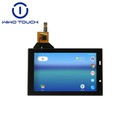First, the overview and development of home automation
1. Definition and Background
Home automation, as the name implies, is the use of microprocessor electronic technology to integrate or electrical and electronic products, or systems in the home, in order to realize the intelligent family life and convenient. With the rapid development of technology, home automation has gradually transformed from a luxury to a necessity of modern life. From simple lighting control, curtain opening and closing, to complex home security systems, environmental monitoring systems, etc., home automation is gradually infiltrating every corner of our lives.
2. Functions and Advantages
The functions of home automation are rich and diverse, including but not limited to lighting control, air conditioning regulation, security monitoring, music entertainment, etc. Its biggest advantage is able to realize the intelligent management of family life, make our life more convenient, comfortable and safe. For example, through the intelligent lighting system, we can according to the scene needs to adjust the brightness of the light and color, create a different atmosphere. Through the intelligent security system, we can view the real-time monitoring picture at home anytime and anywhere to ensure the safety of the family.
3. Application examples
Examples of home automation applications are numerous. For example, through the smart home central control system, we can connect the lights, air conditioning, TV and other equipment in the home to achieve one-click control; Through the intelligent door lock system, we can realize remote unlocked, password unlocked, fingerprint unlocked and other ways of unlocked; Through intelligent curtain system, we can according to the weather and time automatically adjust the degree of opening and closing of the curtain. These application examples not only show the rich functions of home automation, but also let us deeply feel the convenience and comfort brought by it.
4. Trends
Future home automation will toward the direction of more intelligent, integration, human nature. With the continuous development of Internet of things, artificial intelligence and other technologies, home automation systems will be able to achieve more accurate data analysis and intelligent decision-making, and provide users with more personalized services. At the same time, with the increasing of smart home devices and popularization, the family will also unceasingly to enhance automation system integration degree, the user can through a unified platform to manage and control of various devices in the home. In addition, the future of home automation will also pay more attention to user experience and humanized design, so that smart home equipment more in line with people's living habits and needs.
Two, capacitive touch screen in the application of home automation
1. The basic principle of the capacitive touch screen
Capacitive touch screen is a technology that uses the principle of capacitive sensing to realize touch operation. Its basic principle is in the glass surface with a layer of transparent conductive material special metal, when the fingers on the metal layer, contact capacitance will change, that is connected with the oscillator frequency is changed, by measuring the frequency changes can determine the touch location. Capacitive touch screen with high sensitivity, fast response, and the advantages of multi-touch, therefore on smartphones, tablets and other equipment has been widely applied.
2. The advantages of capacitive touch screen in home automation
The application of capacitive touch screen in home automation brings many advantages. First of all, the capacitive touch screen has a high sensitivity and reaction speed, and users can control various devices at home through simple touch operation to achieve fast and convenient operation experience. Secondly, the capacitive touch screen supports advanced functions such as multi-touch and gesture recognition, and users can realize different operation and control functions through different gestures and touch methods. Finally, capacitive touch screens also have good durability and stability, which can maintain stable performance in a variety of environments.
3. Application examples
Capacitive touch screens are widely used in the control interface of various smart devices in home automation systems. For example, in a smart lighting system, the user can adjust the brightness, color and scene mode of the light by touching the screen; In the intelligent security system, the user can view the real-time monitoring screen and control the alarm equipment by touching the screen. In the smart entertainment system, users can select music, video and other entertainment content by touching the screen. These application examples not only show the wide application of capacitive touch screen in home automation, but also let us deeply feel the convenience and comfort brought by it.
4. Look ahead
With the continuous development and innovation of technology, capacitive touch screen will play a more important role in home automation system. In the future, capacitive touch screens will pay more attention to the combination of artificial intelligence and other technologies to achieve more intelligent operation and control methods. For example, the user can through the voice assistant or smart hand ring and other equipment to control a wide range of devices in the home; At the same time, capacitive touch screen will also pay more attention to user experience and humanized design, so that smart home equipment more in line with people's operating habits and needs. In addition, with the continuous development of Internet of things technology, capacitive touch screens will also connect and interact with more smart devices to achieve richer smart home scenarios and applications.




